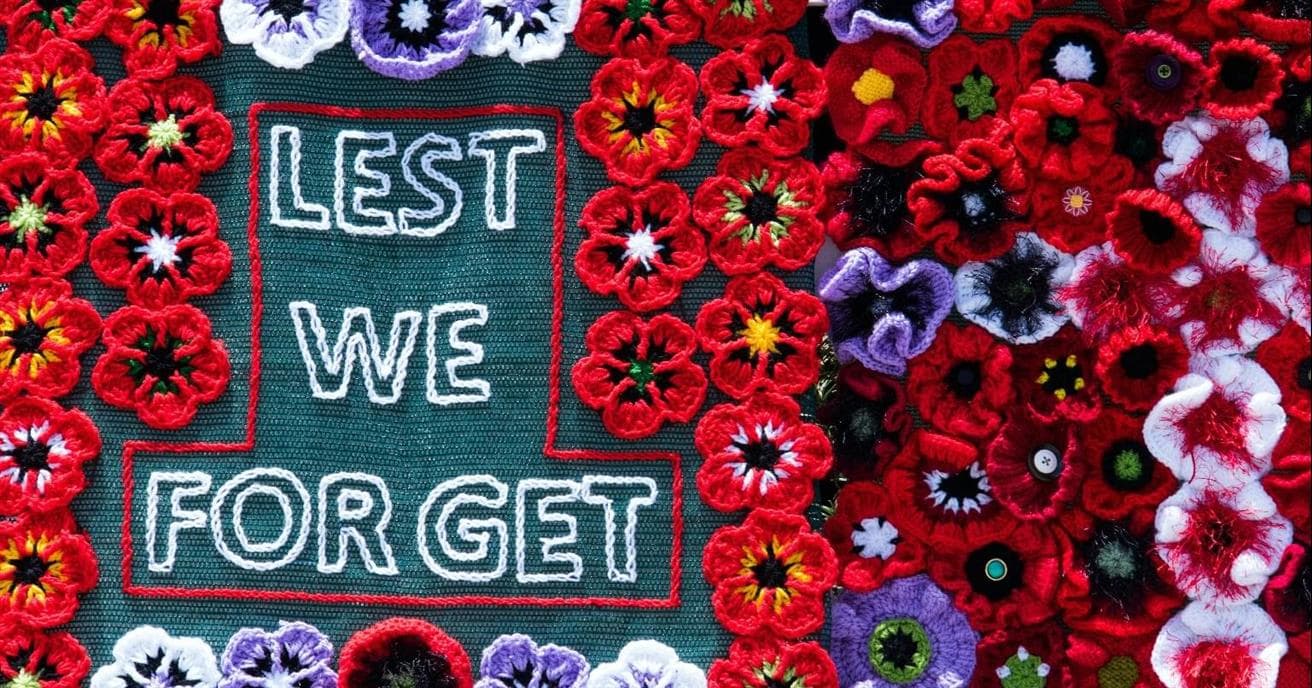While the blood-red flower has been associated with remembrance since the early 19th century, it wasn’t until 1921 that the poppy became an accessory worn by millions of Canadians every November.
From the pins that can be purchased from boxes at grocery stores to handcrafted poppies, to digital versions, poppies are recognized the world over and are still sold to raise funds for veterans.
Etched in stone
Derrick Trottier, a senior advisor at Suncor’s Fort Hills site in the Business Integration unit, wears a poppy for his late grandfather, Joseph Trottier, who served in the Second World War. Joseph would speak Cree to his grandchildren as he marched them through the bush of southern Saskatchewan teaching them about hunting and trapping, but he spoke little of his military career.
“A few years ago, I took my family to southern Saskatchewan where we discovered a monument that commemorated the Indigenous Peoples from that area who served in the first and Second World Wars and the Korean War near Lac Pelletier where my grandfather was born,” explains Derrick. “And there was my grandfather’s name. My father mentioned, many years ago, that Grandpa was in the army, but I had no idea what he did or where he served until I saw this.”
Learning this information about his grandfather prompted Derrick to research his ancestry and apply for his and his children’s Métis status.
“The whole experience has allowed me to have different conversations with my kids,” says Derrick. “They were shy to learn about their Indigenous roots before this, but now we talk about what this all means, the importance of Orange Shirt Day and why schools across Fort McMurray are raising teepees, and it always comes back to the monument.”
Not only are Derrick’s children becoming more connected with their Métis heritage, but Derrick is too. Derrick recently joined the Board of Directors for the McMurray Métis as “a way for me to give back, but also learn more about Métis culture.”
“I wish I could go back and ask my grandfather questions,” admits Derrick. “But I feel what I’m doing now to learn more and teach family about our history is all because of him.”
Joseph Trottier was one of an estimated 12,000 Indigenous men and women who fought in both world wars and the Korean war. Those who were lucky enough to return home, often lost their benefits and rights under the Indian Act. They also came home to find much of their land given to non-Indigenous veterans or farmers. Additionally, until 1960, Indigenous veterans weren’t allowed to vote, and despite making the ultimate sacrifice for their country, they weren’t provided with the same financial assistance offered to non-Indigenous soldiers, nor were they qualified for benefits or allowed in legion halls.
On Nov. 8 (Indigenous Veterans Day) and Nov. 11 (Remembrance Day in Canada and Veterans Day in the U.S.) ceremonies will be held to honour those who served and gave the ultimate sacrifice. Although, most will be virtual this year.






